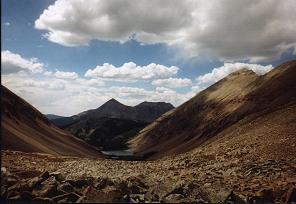
from the base of Mount Wilson.
Dates: August 31 to September 2, 2004
Author: Adam Helman

|
|
View down Navajo Basin to Navajo Lake from the base of Mount Wilson. |
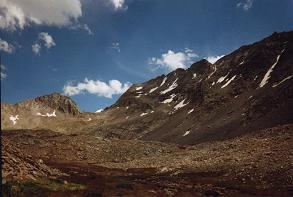
|
|
The north face of both Mount Wilson (center) and El Diente (just beyond photo's right edge) from our high camp. Gladstone Peak stands alone at photo left. |
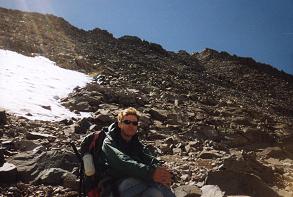
|
|
Edward Earl in the sun during our Mount Wilson climb. |
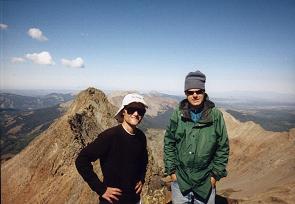
|
|
Edward (at photo right) and Adam atop Mount Wilson. The famous Wilson-El Diente ridge lies behind them. |

|
|
Wilson Peak viewed on ascent of Mount Wilson, its southwest ridge defining the daylit skyline. Green squares mark (our) standard route (click for enlargement). |
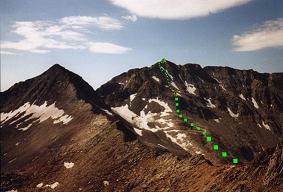
|
|
Mount Wilson, center, from the Wilson Peak southwest ridge. Green squares mark our route (click for enlargement). |
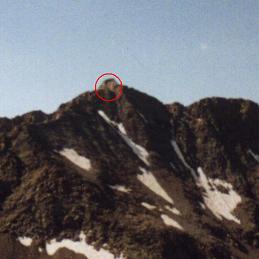
|
|
An enlarged, if somewhat blurry view of the Mount Wilson summit area as seen from the Wilson Peak southwest ridge. The final, class 4 summit crux is encircled (click for enlargement). |